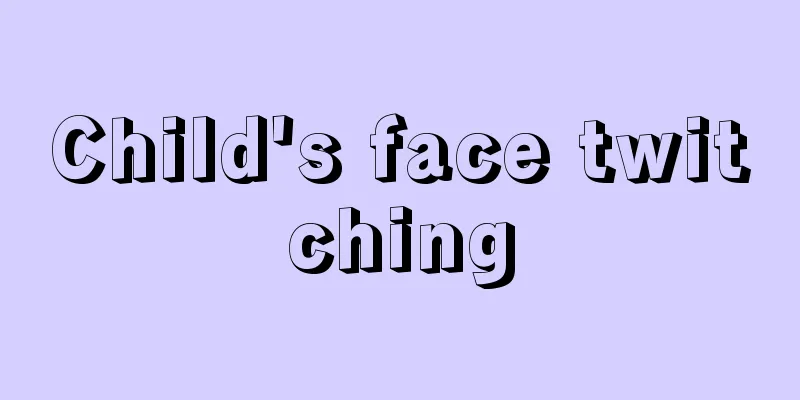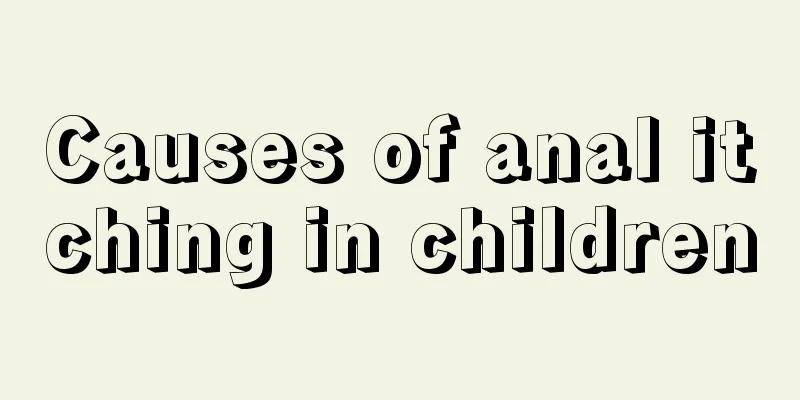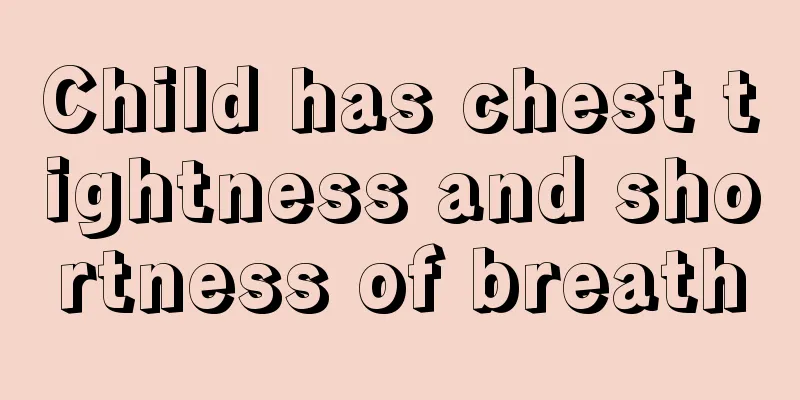Child's face twitching

|
There are many reasons for children's facial twitching. The most common one is facial nerve spasm. This is caused by the face being exposed to wind, the facial nerves being cold, and often eating cold foods. Parents need to give their children certain treatment and clear the blockage in time through massage to avoid complications. Clinical manifestations The disease mostly occurs in middle-aged women. The onset is usually paroxysmal mild twitching of the orbicularis oculi muscle of the lower eyelid, which gradually spreads to one side of the face, with twitching of the muscles at the corner of the mouth being the most obvious. The severity of twitches varies, and they become more severe when you are nervous, emotionally excited, or tired, and disappear when you are quiet or sleeping. In a few severe cases, facial muscle twitching can affect the entire facial muscles on one side. Convulsions are usually limited to one side; bilateral convulsions are very rare. pathology The disease develops slowly and progressively and generally does not resolve spontaneously. Some patients experience paralysis and atrophy of the muscles on the affected side in the late stages, and convulsions also stop. In the early stages of the disease, when facial muscle twitching is limited to the orbicularis oculi muscle, it should be differentiated from functional eyelid spasm, which does not extend to the lower face and is often bilateral. When facial muscle spasms are accompanied by other cranial nerve damage, or limb dysfunction, or involuntary limb movements, intracranial lesions should be considered and the patient needs to go to the hospital for diagnosis and treatment. Hemifacial spasm is mainly treated with drugs, such as phenytoin sodium, chlordiazepoxide, and diazepam. And combined with physical therapy. Symptoms of mild patients may be slightly alleviated after treatment. For severe cases, when drug treatment is ineffective, facial nerve block surgery can be used. Precautions 1. Eat more fresh vegetables, fruits, whole grains, beans and fish. 2. Keep a happy and relaxed mood, balance work and rest, and get enough sleep. 3. Reduce external stimuli, such as television, computer, ultraviolet rays, etc. 4. Patients should be careful not to wash their faces with cold water. When it is windy, rainy or cold, they should keep their head and face warm. 5. Appropriately increase the intake of B vitamins |
<<: White spots on the upper teeth of newborns
>>: What to do if a 6-year-old child has toothache
Recommend
What are the dangers of insufficient sleep for children?
For children, lack of sleep will seriously affect...
How to know if your baby has hearing loss
How do we know if a baby has hearing impairment? ...
What causes baby rash?
Babies' skin is very tender and smooth, and y...
One month old baby laughs while sleeping
We all know that newborn babies sleep when they a...
What should teenagers do if they suffer from severe insomnia?
Many parents want their children to become succes...
Child sneezes in the morning
Some children often sneeze when they just wake up...
Symptoms of a frightened newborn
After the child is born, parents must provide the...
How to treat skin allergies in children
Allergy is a common symptom. Although it is not a...
Baby's head moves from side to side while sleeping
Normal adults usually sleep still, but this canno...
Is it good for newborns to eat DHA?
DHA is also called brain gold. It has a very good...
What should I do if my baby’s ear is ulcerated?
The physical health of the baby is always a conce...
How to clean the vulva of a baby girl correctly?
We all know that women should pay attention to ta...
What should I do if my 2-year-old child has diarrhea?
When a child has diarrhea, it is a symptom of a d...
Is the smell of pine furniture harmful to babies?
Furniture is an indispensable item in home life, ...
Is it really good for children to drink milk every day?
The nutritional value of milk itself is very high...









